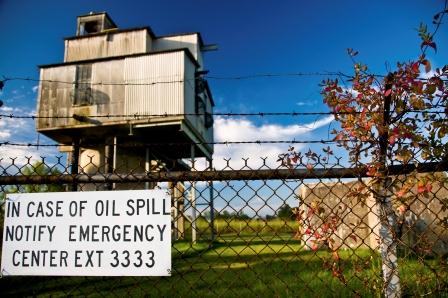5 Steps for Managing Environmental Liability
Environmental liability – something that hangs over the heads of companies many industries, and becomes tangible when equipment malfunctions, containers leak, or contaminants are discovered in building materials. It’s a broad term that includes a variety of sub-surface and building related environmental hazards. If not addressed, environmental liability puts human health, environmental stewardship, and company financials at risk. Limiting liability is a sensitive, complex subject. The laws that have been set forth to protect safety, health, and the environment vary from one region to the next, and from one agency to the next – at both state and federal levels. Corporations that span multiple state lines or even national boundaries struggle to encompass compliance with each individual regulation that governs their operation. The following five steps will help your organization to mitigate environmental risks and liabilities:
1. Understand your problem.
What corrective action does the state require you to complete? What amount of time do you have to take initial action and complete an end-result? It is vital that you determine this immediately upon undergoing a spill or realizing that your property is contaminated with a hazardous material. If you do not take the proper response action or fail to do so in the necessary amount of time, the costs of noncompliance can be staggering. Health is hard to quantify, but costs are not – it can be up to $25,000 per day for each violation.
What do you need to test for? What are the implications? Make sure that you are closely familiar with legal requirements and ramifications. For example, a school system that suspects its building materials contain PCBs may test to satisfy the Toxic Substances Control Act (TSCA). However, the actual interpretive guidance does not mandate testing; it suggests it. If one does move forward with testing, and the concentration is higher than accepted, then remediation is required. If the school had known to self-manage the building materials rather than testing, legal and financial ramifications could have been avoided.
What is reportable and what is not? Under section 304 EPCRA, the “owner or operator” of a facility must report a spill to the appropriate state emergency response commissions (SERC) and local emergency planning committee (LEPC) when there is a release of a CERCLA hazardous substance or of an extremely hazardous substance at or above the reportable quantity. If your facility experiences a spill, do due diligence research to determine what reportable quantity limits are for the chemical that has spilled. Review 40 CFR Section 302.4 for Environmental Protection Agency (EPA) requirements.
2. Map out the path to correction.
Projects that are driven by regulations are variable; the scope of work and price depends on your specific situation. Often times, if requirements are not understood from the onset, the project ends up mushrooming down the line. Predetermine the cost and secure needed resources in advance of your disposal or remedial actions to avoid unforeseen demands later on. Just as you don’t start a trip to a destination without pre-planning your navigation, you don’t clean a contaminated site haphazardly. To get to the end result, you need a written procedure with plans for how to address changes along the way. Use ASTM E 2137 to determine your environmental liability in advance and estimate monetary costs.
3. Manage the process; don’t let it manage you.
Assemble a competent internal and external team to deliver solutions. There are some things in life that okay to skimp on – like buying store brand toothpaste, or saving a few dollars by buying generic detergent or window cleaner. However, when a chemical spills or a contaminant is discovered in your building materials or property, don’t base your decision on what course of action to take based on low-cost options. You will need a project management team that can effectively establish and handle your company’s environmental liability. Overlooking or misjudging a liability that is present today could cost hundreds of thousands of dollars tomorrow, when an inspector arrives at your door, writes you a notice of violation, and slaps you with an enforcement fine that sets you back a year in revenue.
4. Find a trusted advisor.
Having a local consultant on the ground – a company that operates in your industry and in your particular region – is a must. There are nuances to dealing with state and federal regulators that only a firm with regional knowledge can work through. If you can find a company that can advise you and perform the work, then you have killed two birds with one stone. Reach out to companies to get references now so that when an unexpected incident happens at your facility, you can immediately manage and respond to the situation.
5. Be overly cautious.
Eliminating environmental liability is an all-or-nothing game. Do not stop at the bare minimum – Give yourself the peace of mind that you have corrected the issues the first time around. Cutting your scope of work to save dollars can turn into financial disaster if you have to remobilize crews to fix something you missed the first time, or worse, to complete actions as mandated by a regulatory agency if you are inspected and found to be in violation. Protect health and safety and minimize long-term costs by guaranteeing 100% compliance on your own, from the start.
Ready to be proactive about compliance and prepare for any future incidents? Sign up for a free environmental liability consultation today; it’s on Triumvirate.






